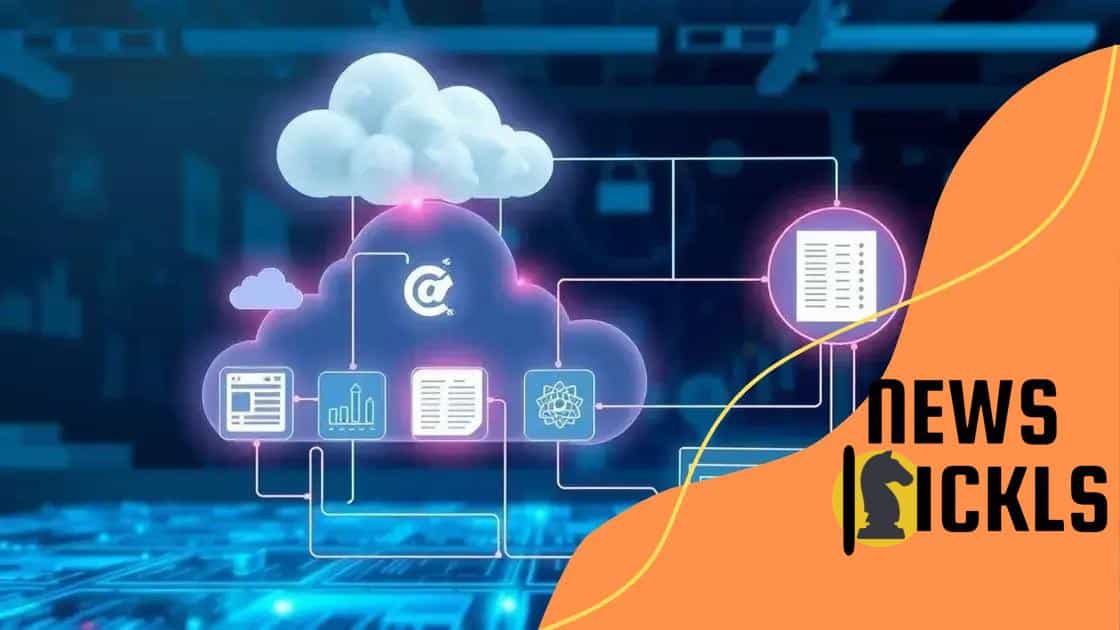The future of cloud computing in enterprise resource planning

The future of cloud computing in enterprise resource planning (ERP) includes increased AI adoption, enhanced automation, improved cybersecurity, and better collaboration tools, ensuring businesses adapt and thrive in a competitive landscape.
The future of cloud computing in enterprise resource planning is brimming with potential. Have you wondered how these technologies could reshape your business operations? Let’s dive into this topic to uncover key insights.
Understanding cloud computing and ERP
Understanding cloud computing and ERP is essential for modern businesses. With cloud technology impacting various business operations, companies need to grasp its significance in enhancing resource planning.
What is Cloud Computing?
Cloud computing allows businesses to access data and applications via the internet. This technology enables organizations to store and process data remotely, rather than relying solely on local servers. As a result, helping to reduce costs and increase flexibility.
Importance of ERP
Enterprise Resource Planning (ERP) integrates core business processes into a single system. It improves coordination and data sharing among different departments. With effective ERP implementation, companies can enhance their productivity and responsiveness to changes in the market.
Benefits of Combining Cloud Computing and ERP
- Cost efficiency: Reduces IT expenses related to hardware.
- Scalability: Easily adjust resources as the business grows.
- Accessibility: Access crucial data from anywhere at any time.
- Automatic updates: Ensures the latest software features without manual intervention.
The synergy between cloud computing and ERP streamlines operations. It allows for better data analysis, enabling companies to make informed decisions quickly. By leveraging this technology, businesses can respond to market demands more effectively.
Furthermore, understanding how these two elements interact can provide businesses with a competitive edge. Cloud computing enhances ERP systems by offering improved reliability and security for sensitive data. Organizations can feel confident knowing their information is protected while they innovate.
As more companies transition to the cloud, the future looks promising. The ability to combine enterprise resource planning with cloud solutions allows businesses to stay agile in a fast-paced environment. Ultimately, this integration can lead to long-term success and sustainability in an ever-evolving marketplace.
Key advantages of integrating cloud solutions
Integrating cloud solutions offers multiple benefits for organizations looking to enhance their operations. These advantages make a significant difference in productivity and efficiency.
Cost Savings
One of the key advantages of cloud solutions is the substantial cost savings they provide. Companies can reduce their expenses by minimizing the need for physical infrastructure and hardware. This shift to a cloud-based model eliminates costs associated with maintenance and upgrades.
Improved Collaboration
Cloud solutions facilitate better collaboration among team members. With real-time access to data and applications, employees can work seamlessly from various locations. This flexibility encourages innovation and allows teams to respond to issues promptly.
- Access from anywhere: Employees can log in from any device.
- Enhanced communication: Tools integrated into cloud solutions make communication straightforward.
- Sharing resources: Easy sharing of files and tools helps to streamline processes.
The scalability of cloud solutions is another advantage worth mentioning. Organizations can easily adjust their resources based on their current needs. Whether expanding operations or scaling down, the cloud allows for flexible resource allocation. This means businesses can adapt quickly to changing market conditions.
Additionally, cloud solutions enhance security through advanced technologies. Many providers offer robust security measures like encryption and regular backups. These features help protect sensitive information and ensure data integrity, providing peace of mind for businesses.
Ultimately, leveraging cloud solutions enables organizations to focus on their core competencies while optimizing their operations. The integration of cloud technology can significantly streamline workflows, driving overall success in the competitive landscape.
Challenges faced in cloud adoption

Facing challenges in cloud adoption is common for many businesses planning to integrate new technologies. Understanding these obstacles helps organizations prepare better.
Data Security Concerns
One major challenge is ensuring data security. Companies worry about potential breaches and the safety of their sensitive information in the cloud. Data breaches can lead to financial loss and damage to reputation.
Compliance Issues
Compliance with regulations is another hurdle. Many industries have strict regulations regarding data handling. Ensuring that cloud solutions comply with these rules can be complex and time-consuming.
Cultural Resistance
Transitioning to the cloud might meet cultural resistance among employees. Some team members may be reluctant to change their established workflows. This resistance can slow down the adoption process.
- Training demands: Employees may require additional training to adapt.
- Fear of job displacement: Workers might worry that automation will replace their roles.
- Inadequate communication: Lack of clear communication about changes can lead to misunderstandings.
Integration with existing systems poses its challenges as well. Companies often find that merging cloud solutions with legacy systems is difficult. They must carefully plan the integration process to avoid disruptions.
Cost management is crucial too. While cloud solutions can reduce some expenses, hidden costs can arise. Organizations need to monitor their spending on cloud services to prevent surprise charges.
Despite these challenges, overcoming them is possible with proper planning and implementation. Businesses can address security, compliance, and cultural issues to ensure a smooth transition to the cloud.
Future trends in cloud computing for ERP
The future of cloud computing for ERP is exciting and full of opportunities. As technology evolves, so do the capabilities of cloud solutions in enhancing enterprise resource planning.
Increased Adoption of AI
One notable trend is the integration of artificial intelligence into cloud-based ERP systems. AI can analyze vast amounts of data quickly, providing businesses with real-time insights. This data-driven approach helps organizations make informed decisions faster.
Enhanced Automation
Automation will continue to play a vital role. Cloud solutions are increasingly allowing businesses to automate repetitive tasks, reducing human error and freeing up employees to focus on strategic activities. Automation enhances efficiency and drives productivity.
- Streamlined workflows: Automating processes leads to smoother operations.
- Reduction of manual tasks: Employees can concentrate on higher-value work.
- Improved accuracy: Automation minimizes errors, enhancing data integrity.
Another trend involves the increased focus on cybersecurity. As more organizations shift to the cloud, protecting sensitive data becomes crucial. Implementing advanced security features, such as multi-factor authentication and encryption, will be key to safeguarding information.
Additionally, the cloud will support greater scalability. Businesses can easily adjust their resources as their needs change. This flexibility allows companies to grow without facing significant barriers.
Collaboration tools embedded within cloud-based ERP systems will also evolve. Teams will benefit from enhanced features, enabling them to work together more effectively, regardless of their physical locations. These tools foster innovation and improve communication.
Lastly, the trend toward sustainability will influence cloud computing. More companies are prioritizing environmentally friendly practices. Cloud computing can lower energy consumption, making it a more sustainable choice for businesses.
Best practices for implementing cloud ERP
Implementing cloud ERP effectively requires a careful strategy. By following best practices, businesses can ensure a smooth transition and maximize the benefits of their new system.
Define Clear Objectives
Before starting the implementation process, it’s crucial to define clear objectives. This includes understanding what you want to achieve with your cloud ERP. Are you aiming to improve efficiency, reduce costs, or enhance data access? Establishing these goals helps guide every step of the implementation.
Engage Stakeholders
Engaging stakeholders from various departments is essential. Include team members who will use the system daily, as their input can help identify specific needs and challenges. When employees feel involved in the process, they are more likely to embrace the new system.
- Conduct surveys to gather feedback.
- Hold regular meetings to discuss progress.
- Establish a support team for ongoing assistance.
Choosing the right cloud ERP vendor is another critical step. Research different vendors to find one that fits your company’s specific needs. Consider factors such as scalability, security features, and customer support. A reliable vendor can make a significant difference in your execution.
Plan for training and support. Employees will require training to adapt to the new system effectively. Schedule training sessions that cover all essential functions. Additionally, offer continued support after the system goes live to address any issues that may arise.
Lastly, monitor and assess the system’s performance regularly. Track key performance indicators (KPIs) to measure the success of your cloud ERP implementation. Adjust your strategies as needed based on the data collected. Continuous improvement helps to ensure your ERP system evolves with your business needs.
Implementing cloud ERP systems can significantly enhance an organization’s efficiency and effectiveness. By following best practices such as defining clear objectives, engaging stakeholders, and choosing the right vendor, businesses can ensure a successful transition. Regular training and ongoing support further boost employee readiness and satisfaction. Finally, constant monitoring of system performance allows for necessary adjustments that can help the company adapt to challenges. Embracing these practices positions organizations to thrive in a competitive landscape with the help of modern cloud solutions. 🚀
FAQ – Frequently Asked Questions about Cloud ERP Implementation
What are the main benefits of implementing cloud ERP?
Implementing cloud ERP improves efficiency, reduces costs, and enhances data accessibility across the organization.
How can I choose the right cloud ERP vendor?
Research vendors based on features, support, scalability, and security to find the one that best fits your business needs.
What training is needed for employees during cloud ERP implementation?
Employees should receive comprehensive training on the new system’s features and functions to ensure a smooth transition.
How do I monitor the performance of my cloud ERP system?
Regularly track key performance indicators (KPIs) and user feedback to assess the system’s effectiveness and make necessary adjustments.






